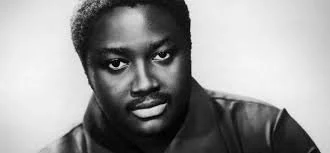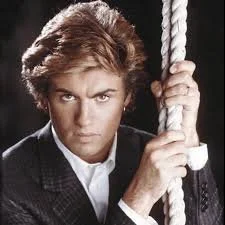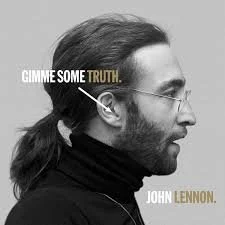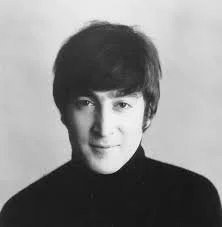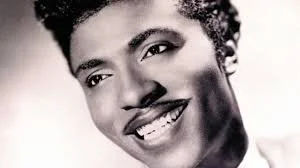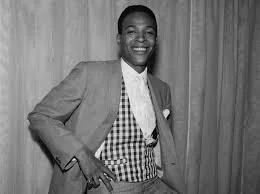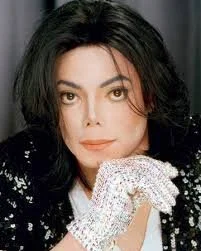Patriarchy and the Music Industry : Men Victims (1)
Patriarchy may seemingly prioritize and accord privilege to men, but it bears stressing that men are also victims of this malevolent system. Men are disadvantaged through the mechanism of wealth distribution, status, ranks and hierarchy. Those bereft of these structures of categorization are positioned at the bottom of the totem pole to be exploited, dominated and discarded.
Given the debaucherous music environment, Noel Redding, who functioned as the bass player in The Jimi Hendrix Experience often adviced those with the intention of pursuing a music career to study law and buy a gun.
Men artists are victimized when they seek artistic and financial autonomy. They are psychologically and sexually manipulated. Some are pupeteered and made to suppress their music talents and play a script. Others are eliminated out of jealousy while others are denied credit for their creative output.
In the case of Jackie Wilson for instance, it has been speculated that he was unfairly treated by the R&B label Brunswick Records president Nat Tarnopol, who ruthlessly exploited him to the extent that his songwriting credit for “Doggin’ Around” was given to Tarnopol’s unborn son, Paul Tarnopol.
However, one must stress that the exploitation of artists is neither monopolized nor exclusively reserved for white proprietors, black executives are equally culpable. And the artistic preys emanate from all racial backgrounds, even though Michael Jackson had once noted that black artists are in comparison to artists of other racial backgrounds, extremely and maliciously exploited. This post highlights some of the men performers who were preyed upon.
Donny Hathaway: He belonged to the group of black artists who had become assimilated through their attendance of Universities in the 60s. Having gained exposure to European musical theory, he attempted an amalgamation of same with his finely-tuned jazz sense which produced captivating outcomes like “The Ghetto”. https://www.youtube.com/watch?v=WkfTLnE5Vtk
He envisioned an artistic composition which infused the religiousity of soul with jazzy chords and indigenous percussion rhythms like the conga. His innovative expansion of Rhythm and Blues placed him in the same category as Curtis Mayfield, Isaac Hayes and Stevie Wonder, known for musical experimentations and social activism.
Strangely, as his career gained momentum, he would fall under depressive spells with tendencies towards abnormal behaviour. Diagnosed with paranoid schizophrenia, he was not one to comply to stringent medication routines. Between 1973 to 1977, Hathaway's mental state adversely affected his life and career trajectory while also marring business relationships. Despite an attempt at career resuscitation in 1979, he maintained an unstable demeanour. That year in January, following a recording session, Hathaway allegedly ended his life by jumping from his 15th-floor room at the Essex House Hotel. The musical star was cut short before he could fully bloom.
According to the grapevine, he had owed the mob some money at the time. Others also claim that he had often talked about “white men being after him”. His demise was not thoroughly investigated. And it begs many questions like “What did he owe the mob money for?”, “Who comprised the mob?”, “Who were the white men after him and why?”, “At what point was their relationship established?”, “Was there a history of mental incapacitation prior to becoming an established artist or thereafter?”, “Was he a victim of MK-Ultra Programming?”.
MK-Ultra is a behavioural modification programme designed for members of the entertainment class like singers, actors , writers, models, etc because of their clout and influence over society. The objective is to churn better behaved individuals whose influence can be utilized for a massive behavioural engineering campaign through conduits like music, films and books. This programmes’s existence dates back to the 1950s. The Manchurian Candidate, starring Denzel Washington highlights this subject matter.
2. George Michael: On Christmas of 2016, the world awoke to the news that the blue-eyed soul icon had been found dead at his home in England. The autopsy revealed that he had suffered from dilated cardiomyopathy, a heart condition.
In the early 90s, he reportedly battled with Sony Music to gain creative control of his music and public image which implied a negation of the sex symbol imagery crafted for him by the label embodied by the dominant black leather motorcycle jacket costume which functioned as a signifier of his transition from the bubblegummy teen band Wham. He wanted to be taken seriously as an artist and not a pin-up idol that he was constructed to be. Consequently, he wanted his contract with the label declared null and void.
In 1988, two events occured: he would sign an 8-album deal with Columbia and Sony would acquire CBS Records, enabling a take-over of Columbia. He would stage a protest by not appearing on the cover of his first album under the new contract Listen Without Prejudice Vol. 1 (1990). The album was a major success having sold 7 million copies. However, his non-compliance to industry rules through the prioritization of his well-being and refusal to participate in the album promotional tour catalyzed a pushback of under-promotion from Sony.
In a bid for self-liberation, he filed a lawsuit against the label in 1992 where he noted that “Since the Sony Corporation bought my contract, along with everything and everyone else at CBS Records, I have seen the great American music company that I proudly signed to as a teenager become a small part of the production line for a giant electronics corporation who have no understanding of the creative process... Sony appears to see artists as little more than software... my relationship with CBS records was a successful affair, whereas this arranged marriage with Sony simply does not work. We do not speak the same language”.
The judge ruled against him and Michael was ordered to foot the defendant's court costs. Thereafter, Michael would abstain from further work with the label for two years. His contract would collectively be bought over in 1995 by Virgin (UK) and Dreamworks SKG (US), and Michael would co-sign a two-album deal.
The rules of engagement would include a whooping sum of $40 million as royalty for Sony from the two albums (Older 1996 and Songs from the Last Century 1999), and his catalog. His 2004 album, Patience, which would be the last, is released on the Sony label after signing a new contract the previous year.
Michael’s quest for freedom from career constraints is echoed in “Freedom”, the protest song that became a hit-song https://www.youtube.com/watch?v=diYAc7gB-0A .
His subversion is reflected in symbolic clips like the destruction of the leather jacket, the guitar and jukebox, as well as his absence from the video. Nonetheless, he would hit the mark of innovation and memorability through his assemblage of the creme de la creme of the modelling industry at the time, as his replacement. Despite the success of this song and the progression of his career which shows extreme financial exploitation, was Michael really free? Is there a possibility that the battle with Sony marred his health assuming he was really sick as the autopsy claims, and not murdered?
3. Jimi Hendrix: One of the cultural figures to have emerged during the counter-cultural era marked by its legendary hippiness, Hendrix was a far-cry from the black power rhetoric of that same epoch. Rejected by black audiences due to his extraordinary dexterity with the electric guitar which was a marker of the blues, of which the black community had disengaged, Hendrix would attain infamy not only for his incredible musical talent, but his excessive drug and alcohol consumption. He was a frontrunner in the utilization of amplifiers for music production. He would become the highest paid rock musician in the world making a remarkable appearance at Woodstock in 1969.
Rock metamorphosed from R&B which became Rock n roll, and later rock. With the long established tradition of black music appropriation and exploitation, and the emergence of rock music as a “white genre”, despite its black origin, did someone find Hendrix’s premium leadership in the genre a threat and thereby conspired to have him eliminated using his established junkie reputation as a cover-up? Hendrix allegedly asphyxiated factored by an overdose of barbiturates. He belongs to “the Club 27” following his demise at age 27.
4. John Lennon: Lennon had deviated from music to become a political activist advocating against the Vietnam war. He also became a devout critic of American politics. This was at a time when the state suppressed and placed many music activist under surveillance. Artists with consciousness-driven, philosophical or spiritual lyricism were considered enemies of the state. If a group of people held hands and sang “Kumbaya” in peace and solidarity, the state deemed such atmosphere intolerable and Lennon was one of such with his “all we are saying, give peace a chance” chant.
On December 8, 1980, Lennon was accosted by a purported fan, Mark David Chapman, who shot him at close range outside his New York city apartment. But was Chapman really a fan or an agent of the state?
On the other hand, rumour mills have speculated for years that his wife Yoko Ono was a CIA plant with links to the British Intelligence sent to wreak havoc on the group Beatles, and destroy Lennon. Did Ono and Chapman work in tandem with each other?
5. Little Richard: Born Richard Penniman, he would lay the foundation for what would become “rock & roll”. He was a successful crossover artist whose music broke the barricades of racism. However, he had his own share of patriarchal injury. He revealed in his autobiography being punched on the chest by Don Robey, the president of Duke-Peacock Records in the 1950s for expressing his dissatisfaction about an unfair amount of royalty payment from the label. The outcome of that attack on Richard would be hernia.
6. Marvin Gaye: He was loved across the world and nicknamed “The Prince of Soul Music”. In his lifetime, Gaye had suffered many setbacks and it seemed he had a lot to prove. Despite his immense success, he was an embattled soul with childhood traumatization stemming from a dysfunctional nuclear family unit. Before venturing into music, patriarchy’s favourite agent was already awaiting him at home. He would distance himself from a violent transvestite father by adding an “e” to his surname. This action also served to dispel rumours about his sexuality. Nonetheless, Gaye’s troubles only multiplied like tax evasion, divorces, depression and cocaine addiction. Prior to his murder, he had attempted suicide. On April 1, 1984, a day to his 45th birthday , he would die by the hands of his jealous preacher father, who shot him at a close range following his mediation in a conflict betwen his parents.
7. Michael Jackson: Jackson was a mega-star and his battles within the industry were commensurately humongous. Controversy was his middle name and wherever he went, it trailed him like a perfume sillage. Speculations rifed about his physicality, sexuality, romantic affiliations, mannerisms and affinity for animals and children which brewed multiple accusations of child molestation.
He was an astute businessman with his purchase of publishing rights to songs from other artists. Known for his philanthropy and humanitarianism, he was the most decorated artist ever until disputes with Sony following the release of Invincible ensued. He declined touring for the promotion of the album to boost sales and as such the album suffered underpromotion.
Jackson had expected to reclaim the masters of his albums which was postponed and made a futuristic plan by Sony. Just like George Michael, he wanted an early termination of his contract. In 2002, at a National Action Network event organised by Al Sharpton, Jackson described Tony Mottola, the President of Sony Music as “mean”, “racist” and “devilish”. He revealed that record companies systematically disenfranchised, defrauded and stole from music artists, particularly the black artists. https://www.youtube.com/watch?v=gK_c2HsQvnk
On June 25, 2009, he would die under very suspicious circumstances. He allegedly overdosed on physician-prescribed medication. His doctor, Conrad Murray was later tried and convicted. But was it really a case of overmedication? If yes, was the doctor weaponized against him by Sony Music?
In the aftermath of his death, countless attempts have been made to soil his reputation and destroy his legacy. The media has particularly been used to maliciously slander and portray him as a pervert. Was Michael Jackson really a paedophile? Faithful fans are more invested in his music than this speculation despite the media’s futile effort at rewriting history which has been alarmingly counterproductive.
Currently, there is a mass awakening to the culpability of the media in the propagation of misinformation and propaganda. It is seen as an anti-truth machine.
( to be continued)
